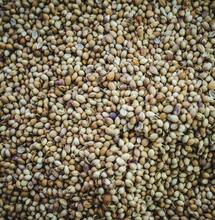Cali Illegal Weed Market Still Growing

Proposition 64, California's 2016 landmark cannabis ruling, sold voters on the promise that a legal market would cripple the drug's outlaw trade, including its associated violence and environmental damage. Instead, the law appears to have triggered a surge in illegal cannabis on a scale California has never before witnessed.
Illegal cultivation hotspots like the one in the Mount Shasta Vista area are engulfing rural communities. From as far afield as the Mojave Desert, the steep mountains on the North Coast, and the Sierra Nevada.
Residents describe living in fear near heavily armed camps. Criminal gangs operate near immunity as they lease private land and quickly construct cannabis farms of up to 100 greenhouses. The police are overwhelmed and can only raid a tiny fraction of the farms, most of which are back up and running within days.
The raids may destroy any plants found plants and arrest low-wage labourers; however, the people funding these illegal farms remain untouchable by the law as they are hidden behind straw buyers and fake names on leases.
The exploitation of low-paid labourers on these farms is common, and working conditions are sometimes lethal. There have reportedly been more than a dozen deaths of farm workers that have been poisoned by carbon monoxide.
The scale of the crisis is unprecedented. Satellite imagery of thousands of square miles of California shows a massive rise in illegal cannabis cultivation in areas where cheap land and law enforcement is spread thin, regardless of whether those areas permitted commercial cultivation.
The boom has witnessed a change in preferred cultivation techniques, from annual harvests of outdoor grows to large canopy-covered poly-tunnels that can raise anything between three to five crops per year.
According to an LA Times review of state, county and court records as well as interviews with scores of residents, legal and illegal cannabis growers, labourers, law enforcement, market analysts, community activists and public officials:
Outlaw grows heightened cannabis-related violence, including shootouts, robberies, kidnappings and, occasionally, killings. Some residents have said they are scared to venture onto their land.
Labourers often work in dirty, dangerous conditions and are frequently underpaid or not paid at all. Since legalisation, carbon monoxide from generators and charcoal braziers has caused the death of seven workers on illegal farms and eight more who have died inside uninhabitable buildings, according to coroner reports.
The Intense farming of cannabis is causing substantial environmental damage. Unregulated chemical fertilisers and lethal pesticides are being used and disposed of without care. Millions of water are being diverted during severe drought, pulled out of aquifers even as the wells of local homeowners go dry.
The immense scale of illegal cultivation crashed wholesale prices last year, jeopardising the licensed market so much that many small-scale legal farmers cannot sell their crops and face financial ruin.
Proposition 64 promised great benefits: an end to drug possession laws that penalised the poor and people of colour and created a commercial market that, last year (2021), accrued $5.3 billion in taxed sales.
However, California has failed to manage the reality that decriminalising a vast, lucrative, illegal industry would fuel the ambitions of international organised crime gangs and opportunists. The reduced criminal retributions included in Proposition 64 lowered the cost and risk of doing business.
Although no comprehensive data on the illegal market scale is available, it is much larger than the licensed industry. Analysis of satellite images shows that illegal farms operating in some of California's most expansive cultivation regions, like Trinity and Mendocino counties, outnumber licensed cultivators by as much as 10 to 1.
Butte County, at the northern end of California's Central Valley, attempted to prohibit commercial cultivation. Still, the number of cannabis greenhouses in one area soared 700% in just five years.
In Lucerne Valley, there were 13 illegal cannabis plots found before legalisation. Last year, however, in 2021, police found 935. An ongoing campaign by the San Bernardino County sheriff has razed more than 8,200 greenhouses, and there are still many more targets on the list.
Enforcement measures against the criminal market are scattered across varied state agencies with inadequate resources and wildly different priorities. Seven years since regulators from the water companies began mapping and measuring the impact of cannabis cultivation in California, the research has still not been finished.
It is safe to say that eradicating the grey market has been a much bigger task than first anticipated.
"It's like taking on an army with a pocket knife"- Mendocino County Sheriff Matt Kendall.















